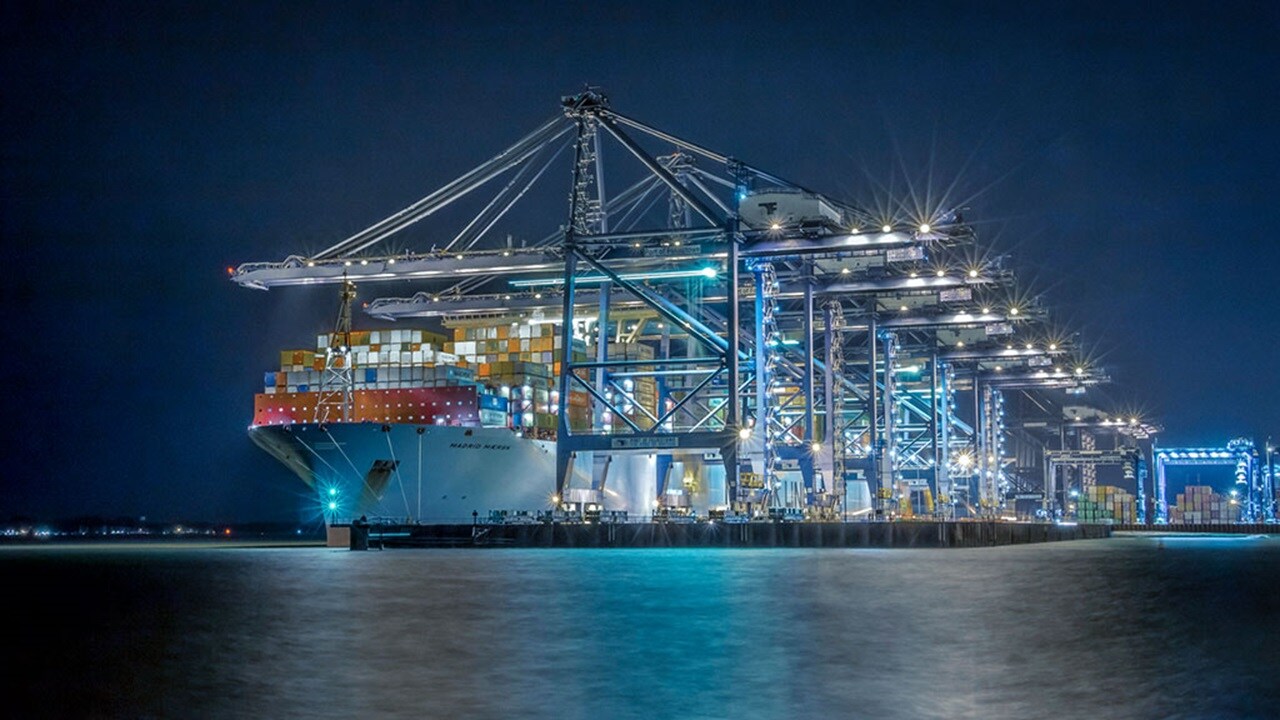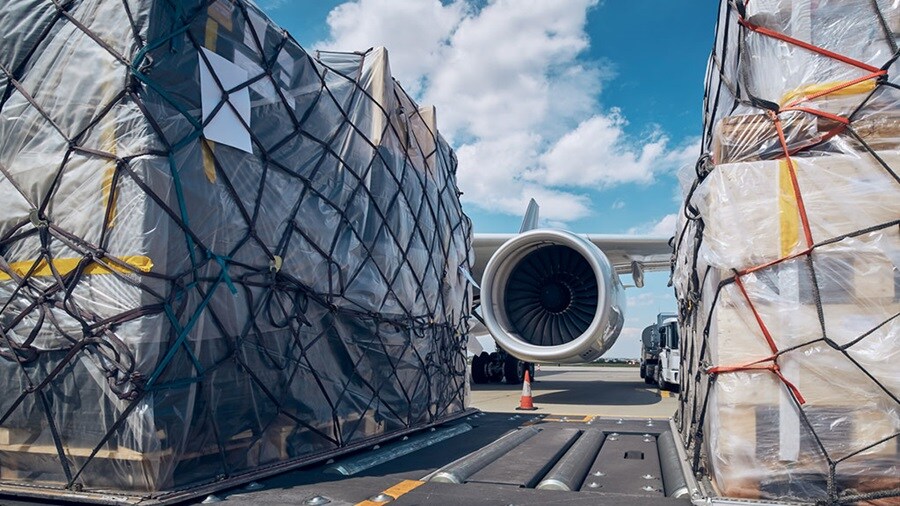As part of our commitment to provide you with the most up-to-date and relevant information on the logistics industry, we share our Market Update on the Latin American market.
You will find information and interesting data on the update of the state of the ports, the most important transport routes and relevant news.
We hope you'll find the following information helpful, as well as inspiring to boost your business and keep your cargo moving.
Topic of the Month: Navigating the Post-Peak Season
After a busy peak season, taking a moment to breathe and reflect is essential. The post-peak season is not just a time for rest but also an opportunity to reorganize and optimize operations for the future. With peak season behind us, now it is time to reflect, recalibrate, and refine strategies. While a well-earned breather is essential, the post-peak season period is also a key opportunity to assess performance, identify key takeaways, and implement improvements for the next cycle.
Businesses must develop a robust logistics plan, learn from past experiences, and adjust to meet the market's ever-evolving demands. From optimizing logistics to strengthening supplier relationships and enhancing operational efficiency, proactive planning can now set the stage for a smoother and more successful high season ahead. Here are a few strategies to ensure you're even better prepared for the next high season.
Inventory Management

After the peak season, conducting a thorough inventory audit is crucial. Analyzing sales and returns data helps understand what products sold well and which did not, guiding your demand planning for the next peak season. This information can be invaluable in making informed decisions about inventory levels and product offerings. For instance, a study by the National Retail Federation found that businesses that regularly audit their inventory and adjust their stock based on sales data saw a 20% increase in efficiency. Efficient inventory management also involves considering clearance sales to shift leftover stock and optimize your inventory levels. By doing so, businesses can free up valuable warehouse space and reduce holding costs.
According to a report by McKinsey, companies that effectively manage their inventory through clearance sales and strategic stock adjustments can reduce excess inventory by up to 30%.
Moreover, leveraging technology and automation can significantly enhance inventory management processes. Implementing inventory management software that integrates with sales and returns data can provide real-time insights and streamline operations. These improvements can lead to better preparedness for future peak seasons and a more agile response to market demands.
Cash flow management
Understanding your financial position after the peak season is vital. While sales may have been robust, there are likely several expenses to manage, such as paying suppliers and taxes. Utilizing tools that integrate with your accounting software to track sales, inventory, and expenses can provide a clear view of your cash flow. Maintaining a cash reserve as a safety net during slower periods is also crucial. For instance, a point of sale (POS) system that integrates with your accounting software can help you track your sales, inventory, and expenses so you always have a clear view of your cash flow.
Developing strategies to boost sales during the off-peak season can help maintain a steady cash flow. Running promotions, offering discounts, and creating loyalty programs can attract customers and encourage repeat business. A study by Logistics Business highlighted that companies adopting cloud-based accountancy software experienced improved cash flow management and real-time visibility into their financial performance. These improvements can lead to better preparedness for future peak seasons and a more agile response to market demands.
Customer Retention and Relationship Building
The post-peak season is an excellent time to focus on customer retention. Returning customers tend to spend more over time, so delivering an outstanding experience is key. Send personalized notes and follow-up emails with discount codes for future purchases. Creating a loyalty program can also help build and nurture customer relationships.
Including a personalized thank you note with every order and sending follow-up emails with discount codes for future purchases can significantly enhance customer retention.

Moreover, leveraging technology and automation can significantly enhance customer retention efforts. Implementing customer relationship management (CRM) software that integrates with sales and returns data can provide real-time insights and streamline operations.
A report by Medallion Enterprises highlighted that businesses prioritizing seamless fulfillment and customer relationship management experienced a 25% increase in customer retention and a 15% increase in customer satisfaction. These improvements can lead to better preparedness for future peak seasons and a more agile response to market demands.
Supplier performance
Reflecting on your suppliers' performance during the peak season can provide valuable insights. Assessing their reliability, production and delivery timelines, product quality, and pricing is crucial for ensuring a robust supply chain for future peak periods.
Leveraging technology and automation can significantly enhance supplier performance reviews. Implementing supplier management software that integrates with sales and returns data can provide real-time insights and streamline operations.
A study by Parcel Monitor highlighted that businesses using advanced supplier management systems experienced a 25% reduction in supply chain disruptions and a 15% increase in supplier reliability.

These improvements can lead to better preparedness for future peak seasons and a more agile response to market demands.
Post-peak season is a crucial period for businesses to reflect, reorganize, and optimize their operations. By conducting thorough inventory audits, companies can gain valuable insights into their sales and returns data, guiding demand planning for the next peak season. Effective cash flow management is also essential, ensuring that businesses maintain a clear view of their financial position and are prepared for any expenses that arise. Leveraging technology and automation in these areas can significantly enhance efficiency and responsiveness to market demands.
Additionally, focusing on customer retention and assessing supplier performance are key strategies for building a strong foundation for future success. Personalized customer interactions and loyalty programs can enhance customer relationships and encourage repeat business. Meanwhile, evaluating supplier reliability and performance can help ensure a robust supply chain for future peak periods. With proactive planning and strategic adjustments, businesses can set the stage for a smoother and more successful high season ahead.
Ocean updates

| Trade lane | Comments |
|---|---|
|
Trade lane
West Coast to Intra-Americas
|
Comments
Our Peru Feeder service stopped calling Pisco in week 10 as part of the plan, given the reefer season slowing down. The service will start calling Buenaventura, Colombia, during March and April 2025 to support the demand and additional flows coming from Colombia to the West Coast of South America.
|
|
Trade lane
North America to Intra-Americas
|
Comments
Savannah calls have been resumed on the South Atlantic Express (SAE) and North Atlantic Express services; therefore, these services are now open for bookings to/from Savannah. The local situation in Haiti has improved, and we are now open for bookings for dry cargo. Our new America Shuttle 1 (AM1), offering direct service from Cartagena, Colombia, to Miami, FL, and Jacksonville, FL, will be launched effective March 18th, 2025. The dedicated weekly vessels on America Shuttle 1 will depart Cartagena, Colombia, on Tuesdays and arrive in Miami, FL, on Saturdays and Jacksonville, FL, on Mondays. Our new America Shuttle 2, offering direct service from Cartagena to Tampa, and New Orleans, will be launching effective March 19th, 2025. The dedicated weekly vessels on America Shuttle 2 will depart Cartagena, Colombia on Wednesdays with arrival in Tampa, on Mondays and New Orleans, on Wednesdays. |
|
Trade lane
West Coast to North America
|
Comments
Our Atacama service is now adding a Northbound (NB) call in San Antonio, Chile, as part of the seasonal reefer peak in the region. The inducement's main focus is to take the reefer from Chile to the United States West Coast into Port Hueneme or Long Beach, improving the transit time to four days.
|
|
Trade lane
North America and Intra-America to East Coast of South America
|
Comments
We will enhance our product from Norfolk. As of March 26th, cargo will load on the TP-12 via Cartagena. The same goes for the cargo departing from Mobile; we will offer a better transit time from April on the TP-15, also via Colombia. The Tango service is extending the Norfolk omissions until Third Quarter 2025. The New Brasex service is again calling El Salvador as from mid-march.. The Gulfex service will remain alternating calls between Altamira and Veracruz in Mexico. |
|
Trade lane
Intra-America to Caribbean
|
Comments
The local situation in Haiti has improved, and we are now open for bookings for dry cargo.
|
|
Trade lane
East Coast of South America to Intra-Americas
|
Comments
Tango extended Norfolk suspension (being attended via barge from Philadelphia) until the Third Quarter 2025 Brazex is returning weekly calls in El Salvador since mid-March. New service attending Los Angeles and Tampa as of April via UCLA service (Transhipment at Cartagena). |
Main port status
ECSA Update: Terminal line up, Gate, and yard running under healthy levels, although with some restrictions for vessels late or over in moves, vessels out of window may face 1 to 3 days of waiting time.


Landside updates
Central America, Andina and the Caribbean Sea Area
The congestion in Central America, which becan in mid-2024, has led to cargo congestion at terminals and internal depots. This has resulted in increased waiting times and significantly reduced the turnover of truck fleets in Guatemala, Honduras, El Salvador, and Nicaragua. To mitigate the impact of these congestions and infrastructural bottlenecks, more rigorous planning is essential.

Air updates
Central America, Andina and the Caribbean Sea Area
Central America and the Caribbean: Demand continues to rise due to e-commerce and consumer goods imports, although air capacity remains limited. With the high tourism season approaching, airports, especially in the Caribbean, are expected to experience congestion.
Panama: Panama remains a key hub with high demand for electronics, automotive parts, and perishable goods exports. While import and connection capacity is strong, routes to the U.S. and Europe are expected to face restrictions during demand peaks.
Colombia: Air cargo demand remains high due to agricultural exports, primarily flowers and fresh produce. Although it's not peak season, airport capacity limitations may create logistics challenges, especially on routes to the U.S., where costs could rise.
East Coast South America
Following the Carnival holidays, which took place during the first week of March, we anticipate a recovery, particularly in terms of imports.
West Coast South America
The new terminal at Lima Airport, Peru, is set to start operations on March 30th. The new terminal is located several kilometers from the current terminal, it features a new layout that eliminates wait times, enhancing efficiency. While the longer distance from airline warehouses and cooler facilities to the new aircraft parking areas may impact air cargo transfer times, the improvements in the layout are expected to streamline operations. We will monitor the situation closely after the launch to determine the final transfer times.

Highlights
Fresh opportunities await at Fruit Attraction São Paulo 2025
Discover the latest updates from Maersk at Fruit Attraction 2025. Learn about our innovative solutions and how we are supporting the global fruit industry. Dive into how we are making a difference in the world of fresh produce.
Learn more from the global Maersk team
Learn what’s happening in our regions by reading our Market Updates by region.
Europe
North America
Asia Pacific
Be sure to visit our “Insights” pages where we explore the latest trends in supply chain digitization, sustainability, growth, resilience, and integrated logistics.
Anything you need, we’re here to help
I agree to receive logistics related news and marketing updates by email, phone, messaging services (e.g. WhatsApp) and other digital platforms, including but not limited to social media (e.g., LinkedIn) from A. P. Moller-Maersk and its affiliated companies (see latest company overview). I understand that I can opt out of such Maersk communications at any time by clicking the unsubscribe link. To see how we use your personal data, please read our Privacy Notification.
By completing this form, you confirm that you agree to the use of your personal data by Maersk as described in our Privacy Notification.
